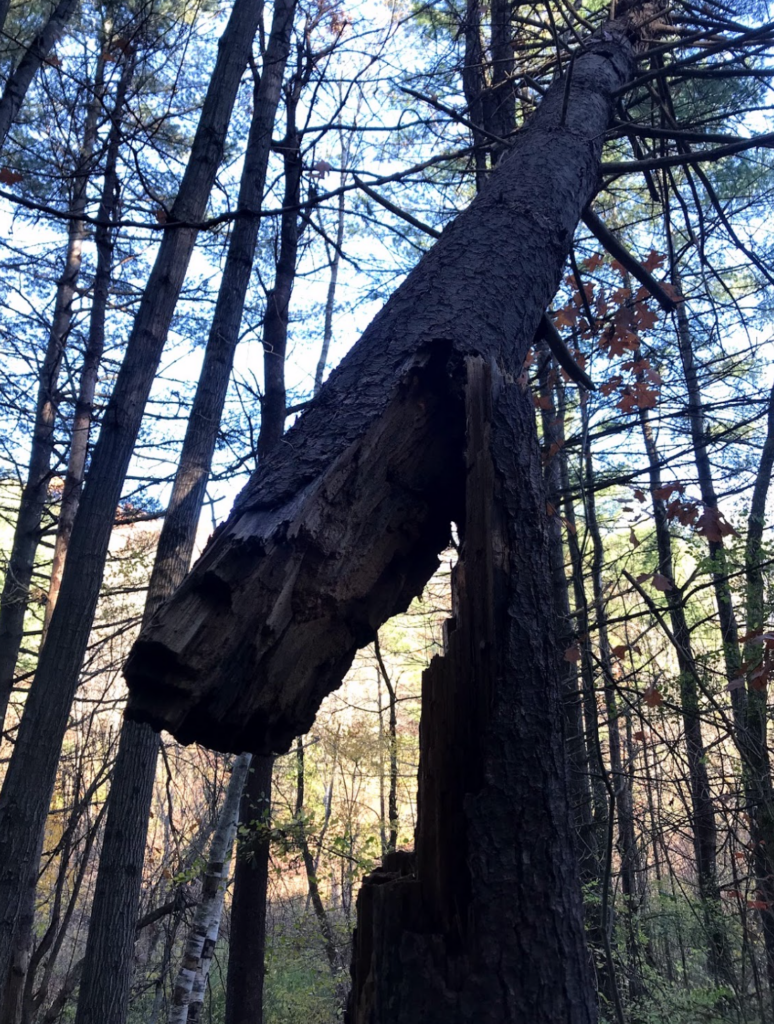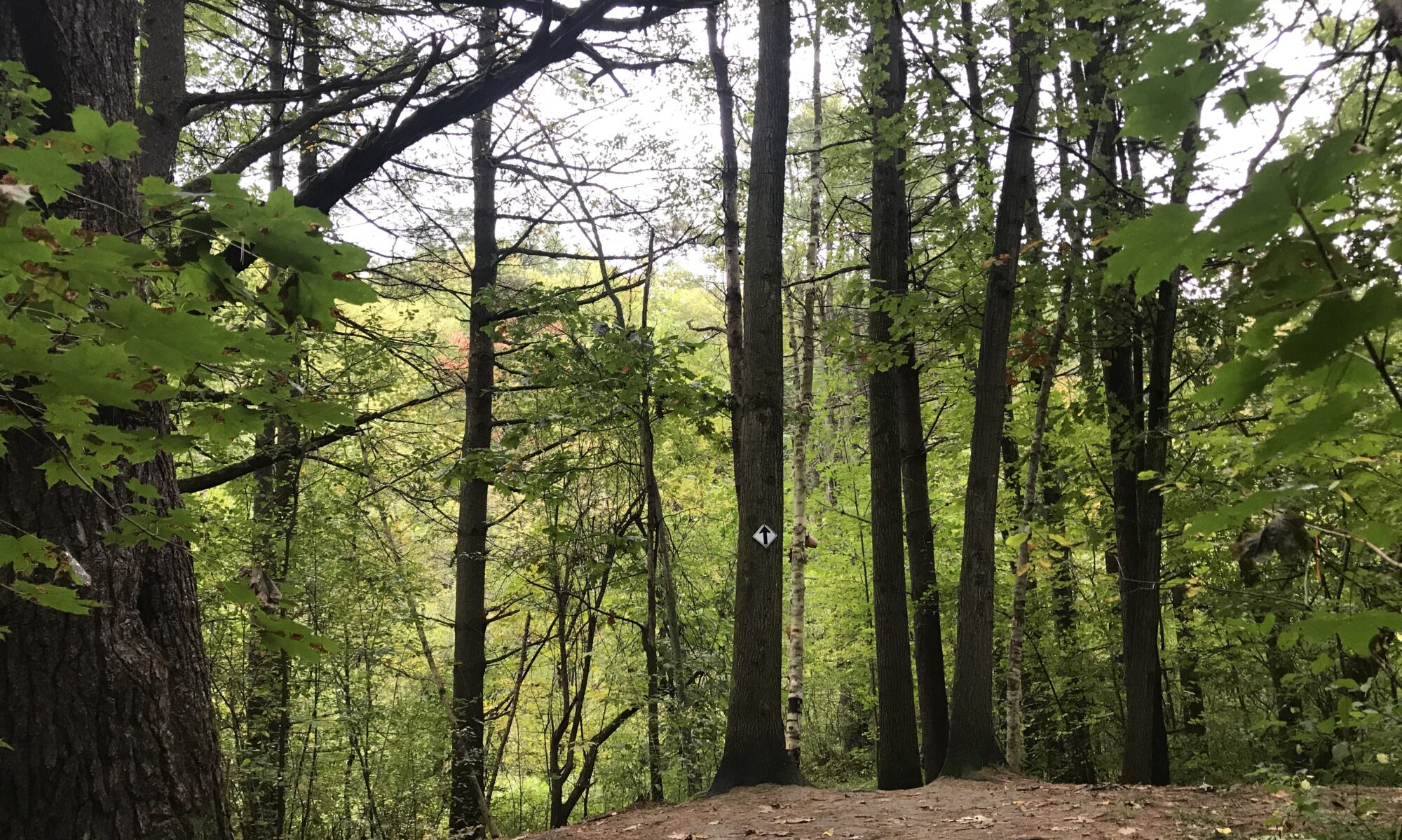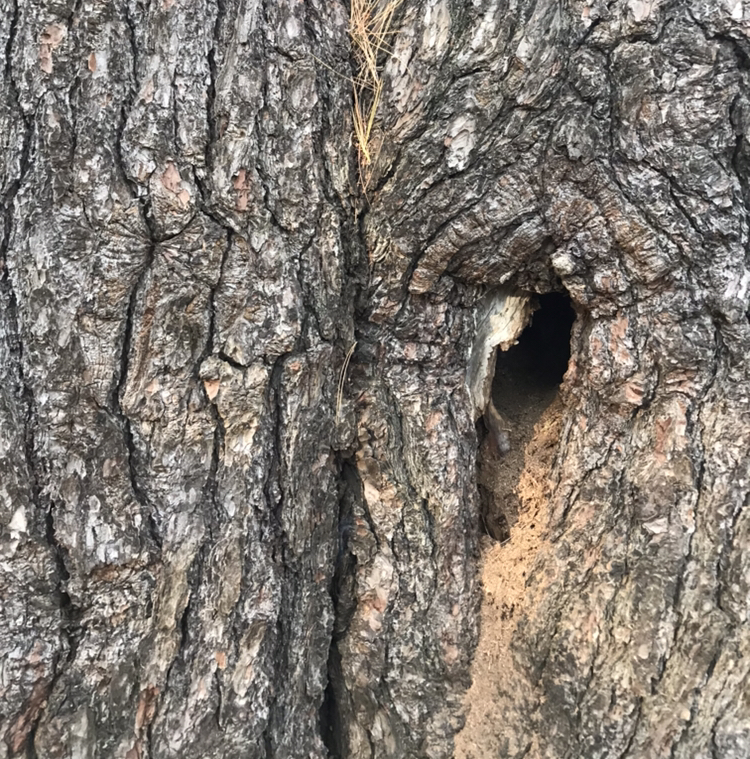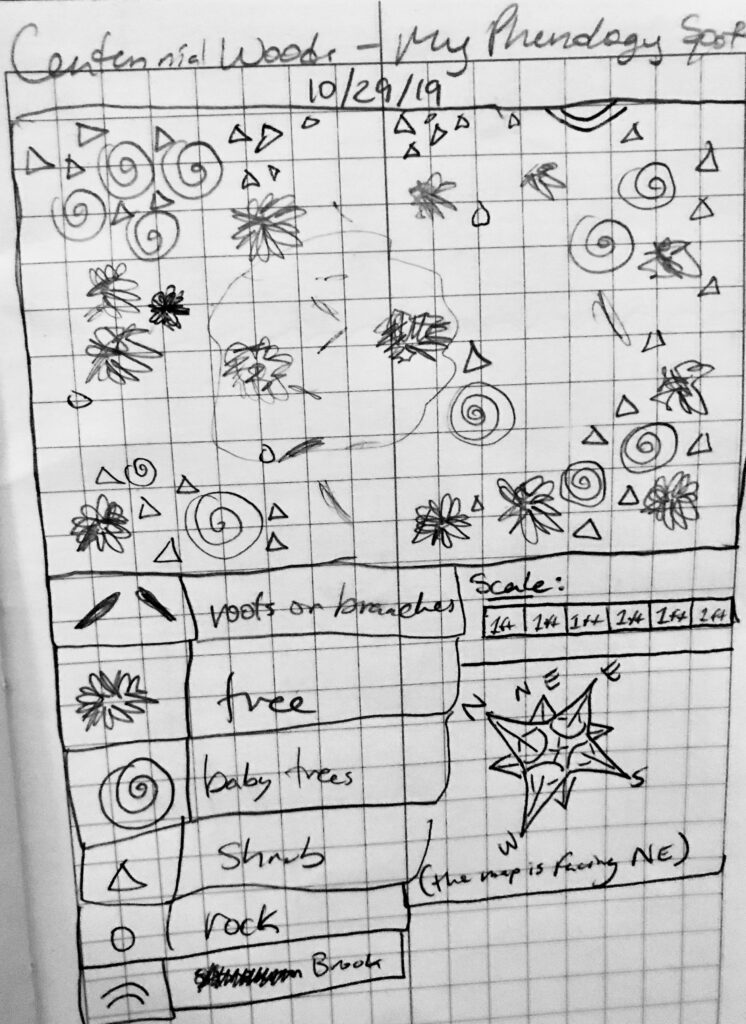Phenological Changes:
As the seasons change, the trees look bare, all of their leaves have shed. The animals have gone into hibernation and the insects have died. The temperature is decreasing as the weather patterns are growing more erratic. The wind gusts as the snow falls. A crisp layer of soft snowflakes sits upon the ground, waiting to be stepped upon (a much better fate than peed on). It seems empty and lonesome at first, but then you see winter's life come out. Deer run across the path, the bobcats dart along, the snow bunnies jump into the burms, and the winter birds fly towards the south, seeking refuge from this cold. As the nature changes, so does its inhabitants.
Component of a larger place:
Taking a step back and thinking about my site through a larger lens, I can see it as a carbon sink for the planet. The trees and soil can take up the harmful emissions and reduce the damage to the atmosphere. This site helps mitigate climate change on a local level. This will ultimately slow global warming down and allow for sea levels to stop rising. This place is an escape from the large urbanized areas and their sprawl. The nature provides aesthetic value and peace of mind for humans that have stress from urban aspects of areas.
Living Through History at this site:
This place probably looked the same years ago, before the colonists, when the Abenaki were hunting and gathering around this land. They respected the Earth, and didn't over-hunt or over-farm, which kept the soil fertile for when the colonists invaded. They started to cut down trees for lumber. They turned this area into farmland for agriculture and grazing, mostly likely cattle with corn monocultures. These practices degraded the soil and caused desertification. This is why the university bought up the land and replanted the trees, to return it to its full glorious forest roots.








